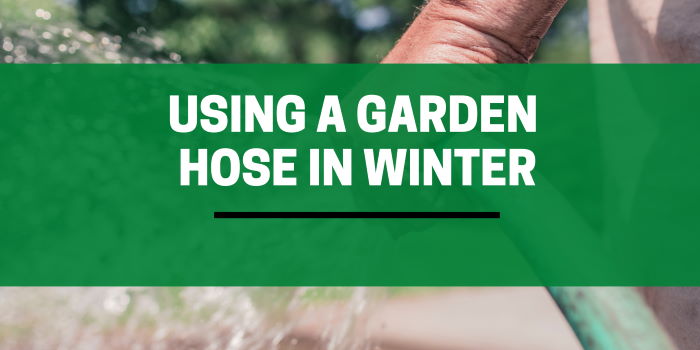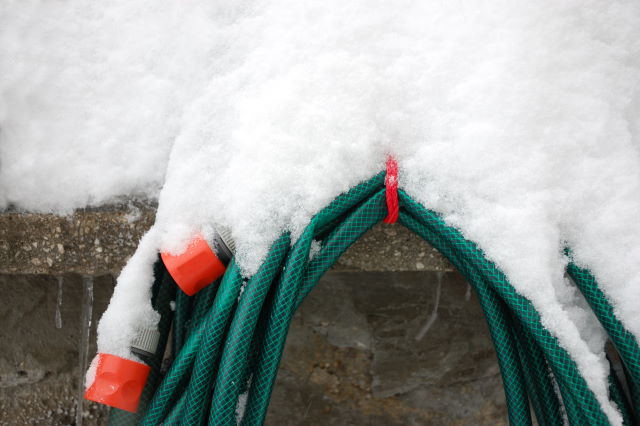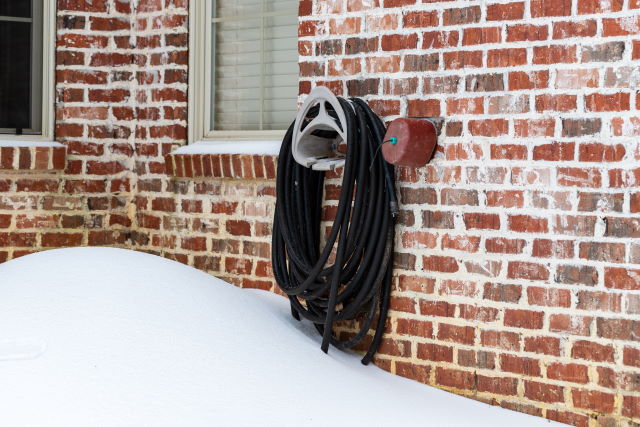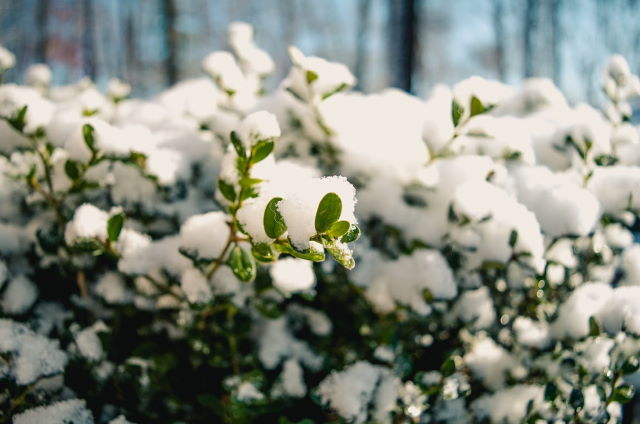
It’s that time of year again: the leaves are falling, your pumpkin spice lattes are ready to consume, and it’s way too cold to garden. But then again, if you love gardening as much as we do, maybe you’ll be willing to brave the chill in order to keep your plants growing through the winter months.
But there are a few things that you should be aware of when using your hose in colder temperatures…
You could save yourself from damaging your hosepipe and an expensive plumbing problem in your home.
In this blog post on winterizing your garden hose so that it doesn’t freeze over during cold weather ahead of time. We’ll address common questions surrounding how long garden hoses should last before needing replacement parts; how often you should change out old hoses for new ones; what types of products work best for protecting them from frostbite; and more!

Contents
What Causes Your Garden Hose To Freeze?
If you leave your garden hose outside with water left in it, you can expect it to freeze when the air temperature drops below 0℃ (32℉). Most walls of a hosepipe can handle a cold temperature lower than that. But any water inside can freeze within 6 hours, so a single cold night is all that is needed for frost damage to occur.
Unfortunately, many homeowners do not perform winter maintenance on their gardening equipment which leads to a need for a repair or replacement in spring.
Protect Your Hose From The Frost
The freezing and thawing cycle is a natural process that happens to your hose each winter season if left outside. The water freezes inside and expands. This ice buildup could burst the hose, crack it, or ruin it in some way.
In my experience, approximately 60% of the garden hoses I have left outside during winter have become frozen and then cracked.
If your garden hose freezes without draining it beforehand, you might find yourself looking at an expensive replacement cost when things thaw out in springtime. There is also a risk of damage occurring to your hose coupling, outdoor spigot or internal frozen pipes.
You don’t want to have to call an emergency plumber just because you didn’t winterize your hose.
To winterize your hose and prevent all this from happening, ensure that no water is left in the hose when the freezing temperatures come.

Disconnect your garden hose from its water faucet and let any residual water drain from its entire length into a bucket or other container. If you have a long garden hose, you may need to drain it in sections for easier management. However, if you have a short garden hose, simply disconnecting from one end should suffice.
You can leave your hose connected, but if a hard freeze is expected you should consider disconnecting it and adding an insulated spigot cover. This can prevent it from rupturing due to freezing.
If you don’t have an insulated cover, any kind of water spigot or hose bib cover is still better than nothing. Draining your spigot is also recommended if your home has a valve to shut it off.
To protect your hose from freezing, wrap it in a blanket or towel and place it inside the garage or shed where it will be protected from the elements.
Soaker hoses can be safely buried in the ground. So you don’t need to put your entire irrigation system into storage.
If there isn’t room for this in your house or garage, consider putting an old tarp over the entire area where your garden tools are stored. This way items like your hose reel and gardening gloves have a space where they are protected from extremely cold temperatures.
Using Your Hose In Winter
If your spigot or hose bib is not working after a freeze, you can try thawing it out with a hair dryer. Make sure the outdoor faucet is completely thawed before turning on the water. Do not use a propane torch or heat gun to thaw out your spigot.
After the garden hose has been stored properly, you may wish to use it again start using it again. It’s important to run water through the hose before you start using it again so that any remaining sediment can be flushed out of the lines.
Be aware that watering plants with water that is too cold can cause wilting, root damage and stunted growth.
If you have a pressure nozzle or sprayer attached to your end of the water hose, use it to clear out any debris as well. Make sure they’re clean before attaching them back onto their respective ends!
You should also check to see if there are any leaks or cracks in your hoses before use. Also, take note of any noticeable drops in water pressure.

Other Options For The Winter Months
If you don’t have the time or resources to care for your garden hose in the winter, there are other options. One option is to run a hose from an indoor faucet just to use when you need it. In some cases, this method could be more expensive than buying a new hose in the springtime, but it is also convenient for those who don’t want to deal with freezing hoses and thawing them out when it’s time for summertime fun.
Another option is freezing spray foam around your outdoor spigot. This will help prevent any unwanted leaks during winter weather conditions!
Insulate Your Hose
There are several types of insulated garden hoses available online or at local hardware stores like Lowe’s or Home Depot that can be used outdoors year-round without worrying about them freezing over when temperatures drop slightly below 0℃ (32F). But in colder climates which reach extreme cold and temperatures drop too low over a long period, there is a chance that the water in the hose will still freeze.
Alternatively, you can wrap your own hose in insulation to prevent it from freezing, though it’s important to wrap it tightly and ensure there are no gaps between the pipe insulation and your hose. The primary benefit of this method is that you can use any type of hose without worrying about purchasing a specific model, although you may have to buy some insulation if you don’t already have some on hand.
Heated Hoses
A heated hose will continue to deliver water even in freezing temperatures, making it ideal for outdoor use during winter. They do require power to keep them warm but some can resist temperatures as low as -40℃ (-40℉).
You can also make your own heated hose by wrapping it in heat cable and insulation. This method is a bit more complicated than the other methods, but it offers customization to use your favorite hose. You can purchase heat cables online or at your local hardware store and they’re easy to install. Simply wrap them around your entire hose and attach them to an electrical outlet with the included plug.
Conclusion
In the end, your garden hose will freeze if the temperature drops. There are a few things you can do to prepare for this, but there’s not much that can be done once it’s happened.
Just remember: if you want your hose to last as long as possible, drain it before the deep freeze, and don’t leave it connected when temperatures drop below freezing!
